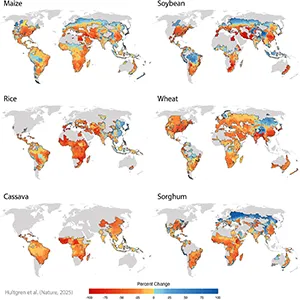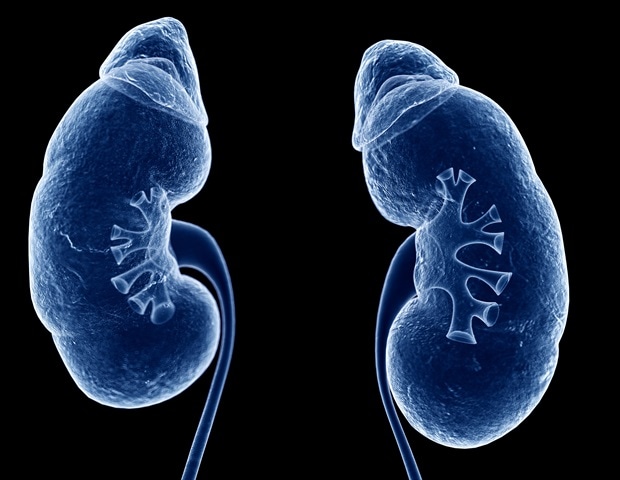Rise in CV Risk Factors Tied to Vulnerable Plaque in ACS Patients – TCTMD.com

Report on Cardiovascular Risk Factors and Plaque Vulnerability in the Context of Sustainable Development Goal 3
Introduction: Aligning Cardiovascular Research with Global Health Targets
A recent study provides critical insights into the mechanisms of acute coronary syndromes (ACS), directly supporting the objectives of Sustainable Development Goal 3 (SDG 3), particularly Target 3.4, which aims to reduce premature mortality from non-communicable diseases (NCDs) by one-third by 2030. Research published in the July 15, 2025, issue of JACC establishes a direct link between the cumulative burden of cardiovascular risk factors and the vulnerability of coronary plaques, emphasizing the urgent need for robust prevention and treatment strategies as outlined in SDG 3.
Methodology and Core Findings
The study utilized optical coherence tomography (OCT) to analyze the pathology of coronary arteries in 1,581 ACS patients, providing a mechanistic understanding of how risk factors contribute to disease progression. This approach helps bridge the gap between known risk factors and the biological manifestation of vulnerable, high-risk plaques.
- Study Cohort: Data was analyzed from 1,581 ACS patients across international registries.
- Primary Association: A greater number of cardiovascular risk factors was directly correlated with increased plaque vulnerability.
- Lesion Specificity: The association was strongest in the “culprit” lesions responsible for the acute coronary event.
- Systemic Inflammation: The study found that white blood cell count, an indicator of systemic inflammation, positively correlated with the number of risk factors, reinforcing the link between risk factors, inflammation, and coronary vulnerability.
Detailed Analysis of Risk Factors and Plaque Morphology
The investigation provides granular detail on how specific, modifiable risk factors—key targets for NCD prevention under SDG 3—contribute to the development of unstable plaques.
- Risk Factor Stratification: Patients were grouped based on the number of four primary modifiable risk factors:
- Hyperlipidemia
- Hypertension
- Current Smoking
- Diabetes
- Vulnerable Plaque Characteristics: For culprit lesions, an increasing number of risk factors was linked to a higher likelihood of:
- Lipid-rich plaques
- Thin-cap fibroatheromas (TCFA)
- Macrophages
- Microvessels
- Cholesterol crystals
- Pathological Outcomes: The burden of risk factors was associated with a higher prevalence of plaque rupture, a primary cause of ACS. Conversely, plaque erosion, a different pathological mechanism, became less common as risk factors accumulated.
Implications for Achieving SDG 3: Good Health and Well-being
The study’s conclusions have significant implications for public health policies and clinical practices aimed at achieving SDG 3.
- Reinforcing Prevention Strategies: The findings provide strong mechanistic evidence for the importance of intensively managing modifiable risk factors. This underscores the “prevention” aspect of SDG Target 3.4, highlighting that controlling hypertension, diabetes, hyperlipidemia, and smoking is crucial to mitigating plaque vulnerability itself.
- Informing Targeted Treatment: By differentiating between the pathologies of plaque rupture and erosion, the research supports the future development of precision medicine. Tailoring therapies based on the underlying mechanism of a patient’s ACS can improve treatment outcomes, directly contributing to the “treatment” component of SDG Target 3.4.
- Promoting a Holistic Health Approach: The link between risk factor burden and systemic inflammation emphasizes that cardiovascular disease is not merely a localized issue but a systemic condition. This supports a holistic approach to patient health, a core principle of SDG 3.
Conclusion and Future Outlook
This research advances the scientific understanding of atherosclerosis, providing a clear rationale for the aggressive management of cardiovascular risk factors. The next phase of research will investigate whether modifying these risk factors can lead to measurable improvements in plaque phenotype. Such work is fundamental to developing effective, evidence-based interventions that will help nations achieve the ambitious goal of reducing premature mortality from NCDs and ensuring healthy lives for all.
Which SDGs are addressed or connected to the issues highlighted in the article?
SDG 3: Good Health and Well-being
- The article directly addresses health issues, specifically focusing on cardiovascular diseases (CVD), which are a leading category of non-communicable diseases (NCDs). It explores the underlying pathology of acute coronary syndromes (ACS), the impact of risk factors like hyperlipidemia, hypertension, smoking, and diabetes, and the ultimate goal of preventing adverse events such as cardiovascular death and myocardial infarction (MI). This aligns with the core objective of SDG 3 to ensure healthy lives and promote well-being for all at all ages.
What specific targets under those SDGs can be identified based on the article’s content?
Target 3.4: By 2030, reduce by one-third premature mortality from non-communicable diseases through prevention and treatment and promote mental health and well-being.
- The article’s entire focus is on understanding and managing a major NCD (cardiovascular disease) to prevent “future adverse events [like CV death and MI].” The study emphasizes the “importance of modifiable risk factors in the pathogenesis,” which points to prevention. Furthermore, the research aims to understand the mechanisms of the disease to “propose tailored therapy or precision medicine,” which relates to treatment. The discussion on intensively managing risk factors is a direct strategy for reducing premature mortality from CVD.
Are there any indicators mentioned or implied in the article that can be used to measure progress towards the identified targets?
Indicators for Target 3.4
- Prevalence of key cardiovascular risk factors: The article explicitly identifies and quantifies the prevalence of major modifiable risk factors within the study cohort. These are:
- Hyperlipidemia (68.9% of the cohort)
- Hypertension (64.4%)
- Current smoking (37.6%)
- Diabetes (32.5%)
Tracking the prevalence of these risk factors in the general population is a key indicator of progress in NCD prevention.
- Incidence of adverse cardiovascular events: The article mentions that patients with multiple risk factors are at “higher risk for future adverse events [like CV death and MI].” The rate of these events is a direct measure of mortality and morbidity from NCDs.
- Markers of systemic inflammation: The study found that “white blood cell count positively correlated with risk factor burden,” suggesting it as a marker for systemic inflammation and coronary vulnerability. This can be used as a biological indicator to assess the risk and burden of disease.
- Measures of plaque vulnerability: While a research tool, the characteristics measured by OCT (e.g., lipid-rich plaques, thin-cap fibroatheromas, macrophages) serve as detailed indicators of the underlying disease severity and progression. They provide insight into the effectiveness of preventative and treatment strategies on a biological level.
SDGs, Targets, and Indicators Analysis
| SDGs | Targets | Indicators |
|---|---|---|
| SDG 3: Good Health and Well-being | Target 3.4: By 2030, reduce by one-third premature mortality from non-communicable diseases through prevention and treatment and promote mental health and well-being. |
|
Source: tctmd.com

What is Your Reaction?
 Like
0
Like
0
 Dislike
0
Dislike
0
 Love
0
Love
0
 Funny
0
Funny
0
 Angry
0
Angry
0
 Sad
0
Sad
0
 Wow
0
Wow
0





































![Lancaster homeowner’s energy-efficient renovation sparks clash over historic preservation [Lancaster Watchdog] – LancasterOnline](https://bloximages.newyork1.vip.townnews.com/lancasteronline.com/content/tncms/assets/v3/editorial/9/ed/9ed03d32-c902-44d2-a461-78ad888eec38/69050b156baeb.image.png?resize=150,75#)











































